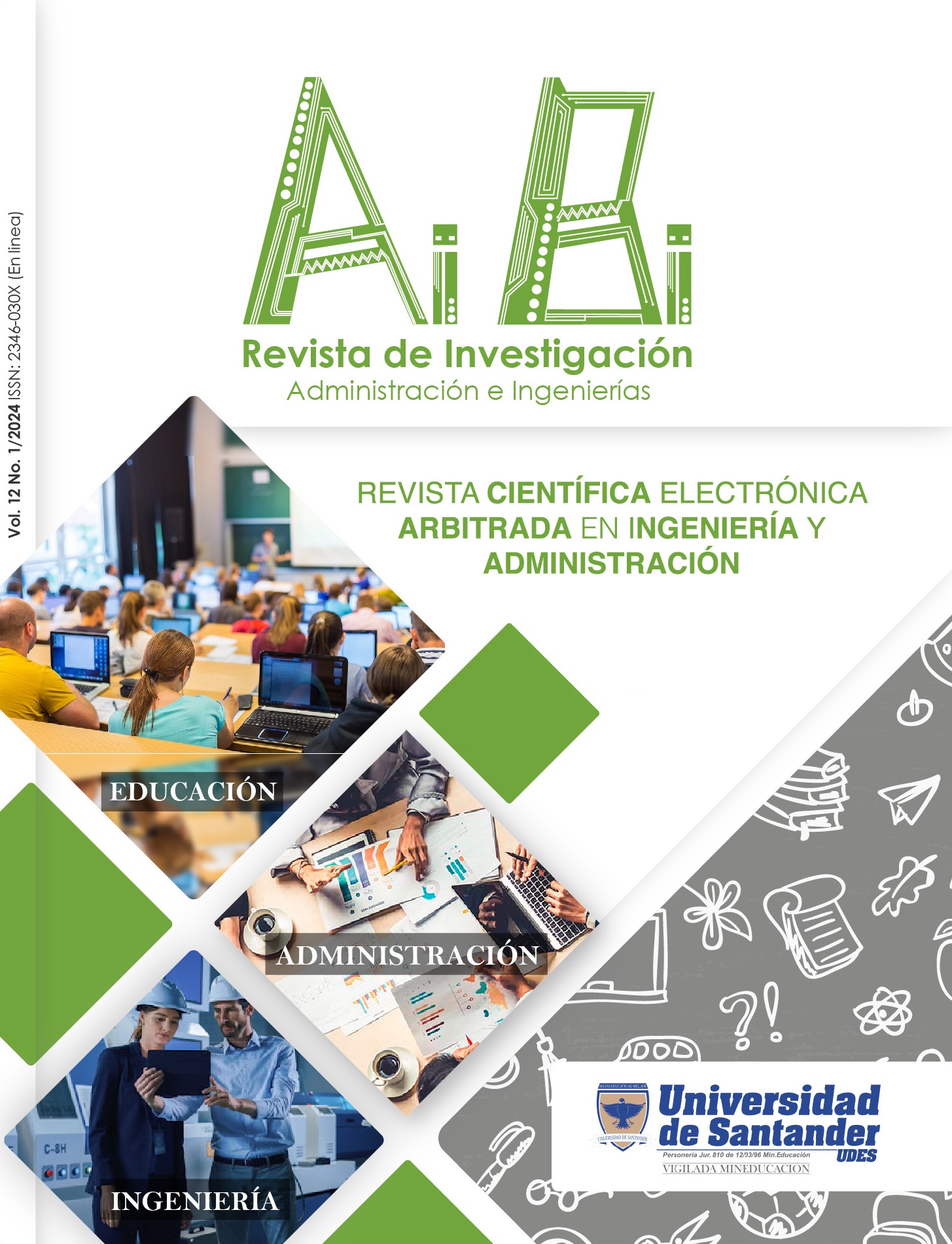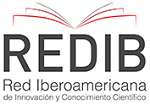Metal-mechanic sector: a proposal for the design of method and time standards
DOI:
https://doi.org/10.15649/2346030X.3529Keywords:
metal-mechanic sector, process optimization, standardization, time study, methods study, methods and time study, standards, time methods, metalworking, sectorAbstract
The present article examines the implementation of a standardized production process system in the metal-mechanic industry, particularly within small and medium-sized enterprises (SMEs) in Valledupar, aiming to align these processes with zero waste principles. A method and time study was conducted, focusing on the most sold products such as windows and doors, to optimize plant layout and improve process efficiency. The results indicated a reduction in operation time from 169.62 to 155.7 minutes, a decrease in the number of processes from 37 to 35, and a significant reduction in the total displacement distance from 95.9 meters to 42.4 meters. Furthermore, standard work times were adjusted, balancing workloads and enhancing productivity. The research concludes that the standardization and optimization of processes are crucial for improving competitiveness and efficiency in SMEs within the metal-mechanic sector.
References
N. Pineda, "El Ingeniero Industrial Actuando En Diversas Disciplinas," in Fifth LACCEI International Latin American and Caribbean Conference for Engineering and Technology (LACCEI’2007), June 2007, p. 10. [En línea]. Disponible en: http://www.laccei.org/LACCEI2007-Mexico/Papers PDF/IE057_Pineda.pdf.
F. Meyers, “Estudio de tiempos y Movimiento para la manufactura ágil”, 2000.
Forbes, "ANDI: El abastecimiento de acero del país está garantizado," Forbes, Nov. 07, 2022. [En línea]. Disponible en: https://forbes.co/2022/05/04/economia-y-finanzas/andi-el-abastecimiento-de-acero-del-pais-esta-garantizado/.
M. I. Redondo Ramírez, C. A. Díaz Restrepo, y G. A. Buchelli Lozano,” Índices de producción para el sector metalmecánica en Colombia", REV VENEZ GERENC, vol. 26, n.º 96, pp. 1364-1379, oct. 2021.
C. Monteiro, L. Ferreira, N. Fernández, J.C. Sá, M.T. Ribeiro and F. Silva, “Improving the Machining Process of the Metalworking Industry Using the Lean Tool SMED”, Procedia Manufacturing, vol. 41, pp. 555-562, 2019, doi: 10.1016/j.promfg.2019.09.043.
C. Arcos Erazo, “ANÁLISIS DE COMPETITIVIDAD, INNOVACIÓN Y TECNOLOGÍA EN EL SECTOR METALMECÁNICO COLOMBIANO”, Encuentros con semilleros, vol. 2, no. 2, Sep. 2021, doi: 10.15765/es.v2i2.2629.
M. Pineda, “Ven gran oportunidad para el sector metalmecánico nacional,” Modern Machine Shop México, México, Mar. 23, 2018. [En línea]. Disponible en: https://www.mms-mexico.com/noticias/post/oportunidades-para-el-sector-metalmecanico-en-mexico.
Cámara de Comercio de Manizales, “Informe del sector: Industria Metalmecánica,” Manizales, 2022.
Departamento Administrativo Nacional de Estadística DANE, “Producto Interno Bruto (PIB) Nacional trimestral II trimestre 2023,” Bogotá, Aug. 2023.
B. Betancourt and J. Cruz, “Escenarios futuros del sector metalmecánico. Municipio de Tuluá y su zona de influencia. Horizonte 2018-2028”, Informador Técnico, vol. 82, no. 2, p. 181, Sep. 2018, doi: 10.23850/22565035.1408.
E. Contreras Castañeda and R. Pérez Uribe, “Priorización de problemas en talleres metalmecánicos: dos casos de estudio en Boyacá-Colombia”, Ingeniería Industrial Actualidad y Nuevas Tendencias, vol. 7, no. 27, pp. 47-68, 2022, doi: 10.54139/riiant.v7i27.161.
R. Hernández, C. Fernández, and M. del P. Baptista, Metodología de la investigación. 2010.
C. A. Figueredo Garzón, N. S. Rincón Parra, H. L. Jiménez Orozco, and F. M. Ávila Guerrero, “Revisión documental de factores de producción analizados en investigaciones del sector metalmecánico Colombia 2015-2019“, Ingenierías USBMed, vol. 11, no. 2, pp. 54–61, Oct. 2020, doi: 10.21500/20275846.4249.
Cámara de Comercio de Valledupar, “Informe de registro empresarial 2023”, Valledupar, Apr. 2023.
M. Delgado, M. Moreira, D. Vidal, Y. Andrade, and C. Delgado, “EVALUACIÓN DE LA DISTRIBUCIÓN DEL ESPACIO EN LA PLANTA INCUBADORA ESPAM-MFL MEDIANTE EL ALGORITMO CORELAP EVALUATION OF THE SPACE DISTRIBUTION IN THE ESPAM-MFL INCUBATOR PLANT USING THE CORELAP ALGORITHM“, Revista: ESPAMCIENCIA, vol. 12, no. 1, pp. 69-74, 2021, doi: 10.51260/revista_espamciencia.v12i1.201.
L. Taipe Chingo and D. Rivas Sierra, “Mejoramiento de la línea de producción en la fabricación de pallets mediante el estudio de trabajo en Tropical Pallets S.A”., RIINN, vol. 9, no. 1, May 2021, doi: 10.21897/23460466.2419.
K. Assan, V. Castro, D. Fontalvo, E. García, S. Ramírez, and A. Huyke, “Aplicación del Estudio de Métodos y Tiempos: Caso Empresarial. Muebles & Colores La 30”, Boletín de Innovación, Logística y Operaciones, vol. 5, no. 1, pp. 65–86, Feb. 2023, doi: 10.17981/bilo.5.1.2023.06.
A. Ortiz, “Factores psicosociales que afectan a los empleados en las organizaciones”, Daena: International Journal of Good Conscience, vol. 16, no. 3, pp. 1-23. Noviembre 2021.
M. Candia, J. Pérez, and D. González, “Manual del método del cuestionario SUSESO/ISTAS21”, 2020.
V. Sosa, J. Palomino, C. Leon, C. Raymundo, and F. Dominguez, “Lean Manufacturing Production Management Model focused on Worker Empowerment aimed at increasing Production Efficiency in the textile sector”, in IOP Conference Series: Materials Science and Engineering, Institute of Physics Publishing, Apr. 2020. doi: 10.1088/1757-899X/796/1/012024.
O. Escalante, “Production Line Balancing Model to Improve Productivity in a Tempered Glass Processing Company,” Industrial Data, vol. 24, no. 1, pp. 219–242, Aug. 2021, doi: 10.15381/idata.v24i1.19814.
Downloads
Published
How to Cite
Issue
Section
Altmetrics
Downloads
License
Copyright (c) 2024 AiBi Journal of Research, Administration and Engineering

This work is licensed under a Creative Commons Attribution 4.0 International License.
The journal offers open access under a Creative Commons Attibution License

This work is under license Creative Commons Attribution (CC BY 4.0).












